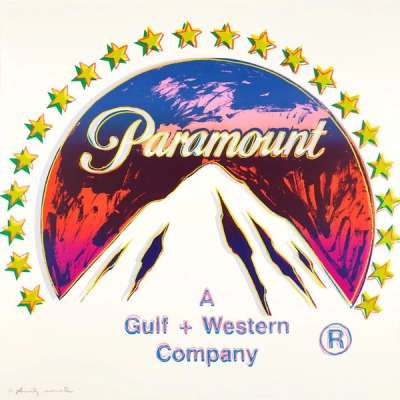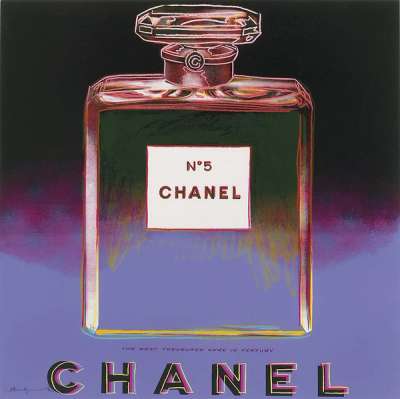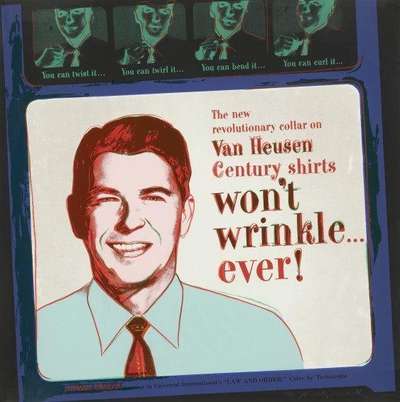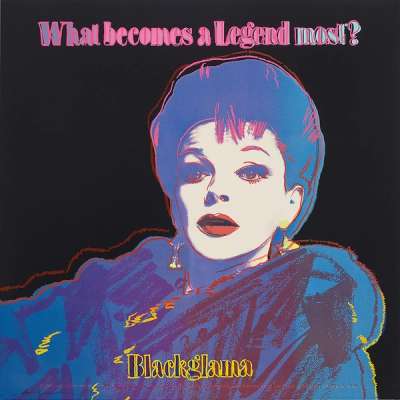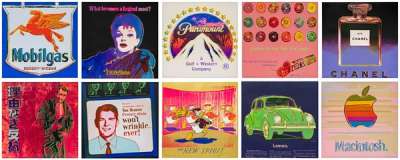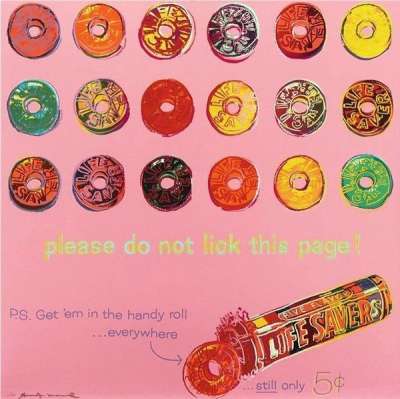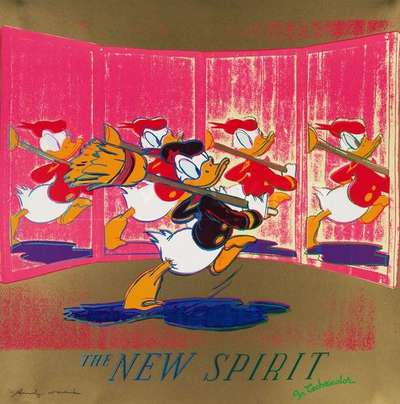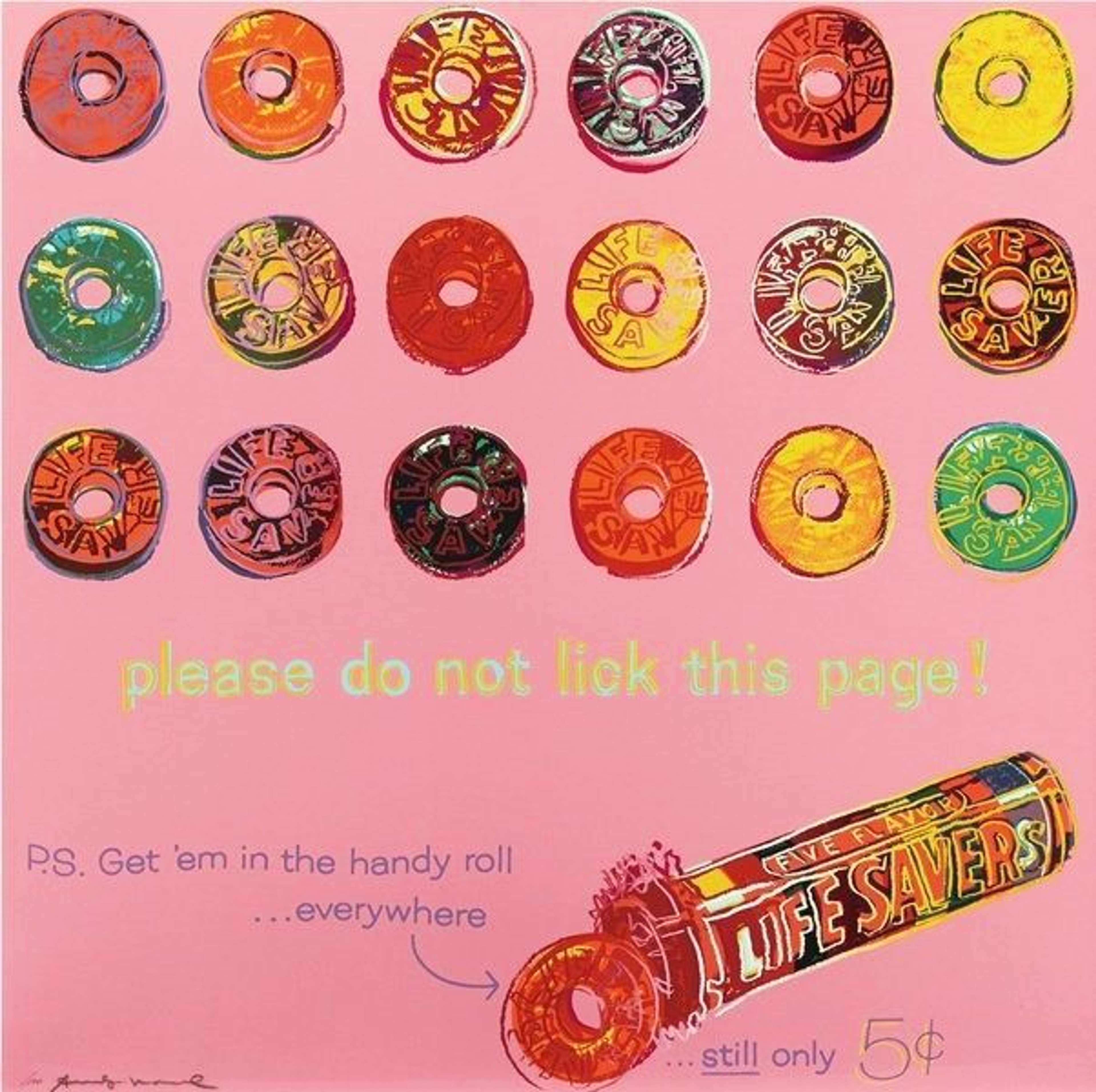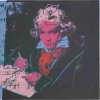Ads
Andy Warhol’s Ads (1985) print portfolio, produced just 2 years before he died, comprises ten faux advertisements for giants of American consumerism. Implicitly, the portfolio offers a personal retrospective: acknowledging his early career as a commercial illustrator in the Pop-art style that made him international fame.
Andy Warhol Ads For sale
Ads Value (5 Years)
Works from the Ads series by Andy Warhol have a strong market value presence, with 352 auction appearances. Top performing works have achieved standout auction results, with peak hammer prices of £1866593. Over the past 12 months, average values across the series have ranged from £30000 to £1866593. The series shows an average annual growth rate of 13.09%.
Ads Market value
Auction Results
| Artwork | Auction Date | Auction House | Return to Seller | Hammer Price | Buyer Paid |
|---|---|---|---|---|---|
 Apple (F. & S. II.359) Andy Warhol Signed Print | 27 Nov 2025 | Koller Zurich | £136,000 | £160,000 | £210,000 |
 Life Savers (F. & S. II.353) Andy Warhol Signed Print | 24 Nov 2025 | Shapiro Auctioneers | £42,500 | £50,000 | £60,000 |
Ads (complete set) Andy Warhol Signed Print | 20 Nov 2025 | Sotheby's New York | £1,513,000 | £1,780,000 | £2,280,000 |
 The New Spirit (Donald Duck) (F. & S. II.357) Andy Warhol Signed Print | 26 Oct 2025 | SBI Art Auction | £38,250 | £45,000 | £50,000 |
 Volkswagen (F. & S. II.358) Andy Warhol Signed Print | 24 Oct 2025 | Christie's New York | £42,500 | £50,000 | £70,000 |
 Van Heusen (Ronald Reagan) (F. & S. II.356) Andy Warhol Signed Print | 22 Oct 2025 | Phillips New York | £29,750 | £35,000 | £45,000 |
 Mobilgas (F. & S. II.350) Andy Warhol Signed Print | 12 Jul 2025 | SBI Art Auction | £38,250 | £45,000 | £60,000 |
 Chanel (F. & S. II.354) Andy Warhol Signed Print | 12 Jul 2025 | SBI Art Auction | £136,000 | £160,000 | £190,000 |
Sell Your Art
with Us
with Us
Join Our Network of Collectors. Buy, Sell and Track Demand
Meaning & Analysis
Produced 2 years before his death in 1985, Warhol’s Ads series epitomise Pop Art: depicting the key emblems of American consumer culture. Commissioned by Feldman Fine Arts, the suite is comprised of 10 limited edition screen prints on Lennox Museum Board. It includes works titled Apple, Blackglama (Judy Garland), Chanel, Life Savers, Mobilgas, Paramount, Rebel Without a Cause (James Dean), The New Spirit (Donald Duck), Van Heusen (Ronald Reagan) and Volkswagen. In many ways this highly collectible series epitomises Warhol. A series of images depicting the icons of American consumer culture, celebrated in vivid technicolour, this is pure Pop Art.
The Ads portfolio is an acclaimed series and a catalogue of Warhol's interests across his career. Its subjects cover film, celebrity, glamour, fashion, television and advertising. By turning mass media imagery into art, Warhol elevated the everyday, celebrating the democratisation of popular consumer culture. As the artist himself once said, “what's great about this country is America started the tradition where the richest consumers buy essentially the same things as the poorest. You can be watching TV and see Coca-Cola, and you can know that the President drinks Coke, Liz Taylor drinks Coke, and just think, you can drink Coke, too.”
The Ads portfolio represents the artist's early career inspirations as well as the stylistic motifs that characterised his late period works. Warhol moved from Pittsburgh to New York in 1949 and became a successful commercial illustrator working for the likes of Tiffany, Vogue and Colombia Records. These early illustrations demonstrate the Warhol’s skill as a draughtsman and his formative printmaking process. The artist achieved the signature blotted line that appeared in these delicate drawings by transferring an ink illustration onto a separate piece of paper. This monoprint technique was an early exploration into the process of image reproduction that came to characterise Warhol's practice.

